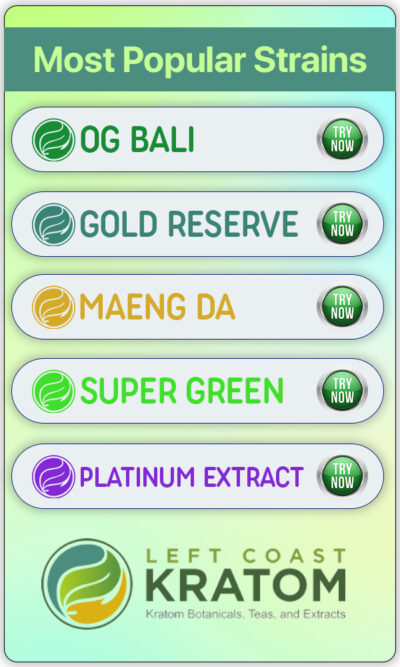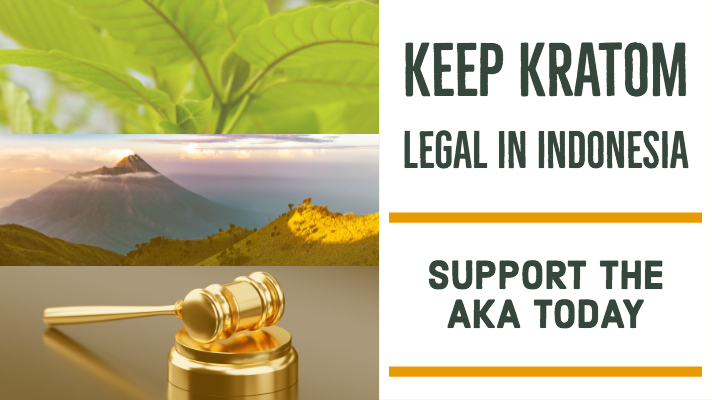While kratom trees have been around for hundreds of years, the worldwide kratom industry is still very young. Supply chains, farming methodologies, and guidelines for safe kratom sales are being developed and altered every month. As of now, there are still a lot of changes happening regarding kratom in the world.
One area of the kratom industry that gets even less attention than the rest of the industry is the environmental impact that kratom farming has. All farming industries put some type of pressure on the land and locality; some programs are able to balance that out and some are not.
How sustainable is kratom, and are there any environmental impacts that the industry is having that we should be concerned about? These are questions that we would like to investigate more deeply as we move into a kratom-friendly world.
A Brief Kratom Introduction
To understand how kratom might have an effect on the environment, it is important to first be aware of what it is and why it has an impact on the environment at all.
Kratom is a tree. Also known as Mitryagyna speciosa, it is a tree in the coffee family. The tree has grown naturally for hundreds of years in many Southeast Asian countries such as Malaysia, Indonesia, Thailand, Myanmar, and Papua New Guinea.
The leaves of the plant have been used for both traditional and recreational purposes in those regions for many years. The leaves could be chewed on directly for pain relief and focus, or the teas could be turned into a tea to treat common ailments.
Today, this botanical is being used for a wide variety of reasons. It’s growing popularity is leading to more focus on kratom, so the question about its long-term sustainability effect is very important.
Is kratom having an environmental impact? Is it helping or hurting the world and areas where it is grown?
Kratom: The Lesser Of The Evils?
One argument often made in favor of increasing the presence of kratom farming in these regions is that kratom is the lesser of the farming evils.
For many years, the palm oil and rubber industries kept this area alive. Additionally, forests are often being harvested for tree-based paper and timber, and that is leading to an overall reduction in space for forest animals and cultures.
Palm Oil
Palm oil production has played a huge role in the deforestation of forests in this region, and there is also evidence that palm oil production plays a large role in the problem of climate change.
Palm oil is the most highly produced oil – period. More than 60 million tons of the product are made each year, and it takes over 270 hundred million acres of land to do so. Creating these plantations leads to mass deforestation, and there are also many concerns about human rights abuses within the palm oil industry.
Palm oil is used in a huge variety of products that shoppers like you and I buy at the supermarket, and many of the world’s fuel sources contain palm oil even though it does not burn clean.
Many people believe that farming kratom instead of palm oil in regions where farming is a way-of-life could help to reduce the overall negative impact that palm oil has.
Deforestation
Another huge issue seen in these regions is deforestation. The rainforest in these areas is amazing and helps to create some of the amazing biodiversity that can be found in our world. The rainforest, however, is often destroyed to the benefit of the paper and timber industries.
Up to 70% of the paper in the United States already comes from plantations where timber is sustainably managed, but the same cannot be said in some regions of the world where these industries are less regulated. In Indonesia, 70% of all logging that happens is illegal, and yet, it continues.
Often, it is the rainforests that suffer from this addiction to logging. Recent activism in the regions has created small smarks of change, but there is still a lot of work to be done.
While paper and timber farming require that native rainforests be cut down, the same cannot be said about the kratom industry. Kratom can (and often is) harvested by hand, leaving the trees intact. The plant continues to grow, and the forest around the plant can thrive with it.
Kratom: An Option of Sustainability
One of the reasons it is so important to pay attention to where your kratom comes from is because you want to be sure it comes from a sustainable kratom farm. Despite the potential that kratom farms have to replace industries that are more harmful to the planet, kratom farms also have to commit to environmentally-friendly practices.
While it is a good start to replace industries that are naturally more harmful than growing kratom, it’s an even better choice to make sure that the kratom industry is as eco-friendly as possible.
For example, paying farmers to grow and harvest kratom in their backyards in smaller batches may be a great alternative to setting up huge kratom groves. By planting small amounts of trees in various yards rather than clearing natural forests to grow kratom, the world is a little less damaged.
Additionally, it’s important that kratom continues to be harvested by hand rather than having entire forests taken down just to get the kratom leaves. Handpicking is more common than other methods of harvesting, but that trend needs to continue.
Wild trees can also be harvested to get kratom in some areas; in this case, trees don’t even need to be planted. Through wild harvesting, even less of an impact is made on the forests that kratom is native to.
It’s Up To People Like Us
You have a choice to decide where you will buy your kratom from. We have a choice to decide where we will source our kratom from. Vendors like us and customers like you have the opportunity to make sure that we choose options that are as eco-friendly as possible.
Doing so ensures the future of the kratom industry as well as additional protection for the world around us. What will you do to do your part?



